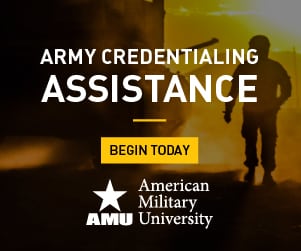By Bradley Hood
Contributor, In Military Education
One of the best opportunities open to qualified Active Duty Enlisted Marines with an interest in pursuing a college education and a subsequent commission as an officer is the Marine Corps Enlisted Commissioning Educational Program (MECEP). Along with the Enlisted Commissioning Program (ECP), these two programs form the prior-enlisted options open to Active Marines, although those with an interest exclusively in a commission may attend PLC or the regular 10 week OCC covered in a previous post.
By Bradley Hood
Contributor, In Military Education
The Post-9/11 GI Bill pays out on a system slightly differently than the Montgomery GI Bill, a topic I have previously discussed on this blog. Because I have already gone over this topic, if you have interest in how the system payment works, I recommend you check my earlier post, or go to a site like military.com, a repository of a great deal of up to date information on the GI Bill. To summarize: With enough service, a service member or veteran can have up to 100% of their public school tuition paid for them by the VA, in addition to living expenses.
By Bradley Hood
Contributor, In Military Education
Perhaps the occurrence of downtime is more common on the reserve side of the Marine Corps than it is on Active Duty – I will be better equipped to know the answer to that in a year when I receive my Active Duty orders – but as a junior enlisted Marine I felt that I spent at least half of my day waiting around to do something.
On April 25, a massive 7.8-magnitude earthquake ripped through the heart of central Nepal. The resulting devastation crippled the region, razing entire villages and cities. As with any natural disaster, the main challenge for search and rescue teams is safely locating and rescuing people who have been injured, trapped in debris, or cut off from urbanized areas. However, a series of aftershocks coupled with Nepal’s mountainous landscape and poor infrastructure made it extremely difficult for rescue teams to reach impacted areas. Read more about how unmanned aerial systems (UAS), commonly known as drones, can be extremely beneficial to rescue operations and why U.S. public safety agencies should be pushing for federal regulations to allow them to use drones for disaster response.
IHS announces Sylvia Longmire as its latest contributor. Sylvia is an award-winning expert in Latin American drug wars and U.S. border security issues.
By Brian Meek
After a 24-year career in law enforcement, Brian Meek is looking towards retirement and the prospect of starting a second career in the intelligence field. Learn what steps he’s taken to make the transition to a new career in intelligence.
By William Tucker Chief Correspondent for In Homeland Security Members of the Presidential Security Regiment in Burkina Faso have seized…
Ten years ago today, the Senate Judiciary Committee convened a hearing to learn what a small group of military intelligence analysts had discovered about the world-wide reach of Al Qaeda and its affiliations prior to 9/11. This first hearing focused on what is known as the Able Danger program, which was the first significant data mining operation that successfully harvested and visualized massive amounts of data. Erik Kleinsmith, who was the senior military member of the Able Danger analytical team, shares lessons learned from this program as well as the ongoing challenges faced by intelligence analysts.
The coronavirus has raised a number of ethical issues associated with the personal lockdowns ordered by states and the federal government.
